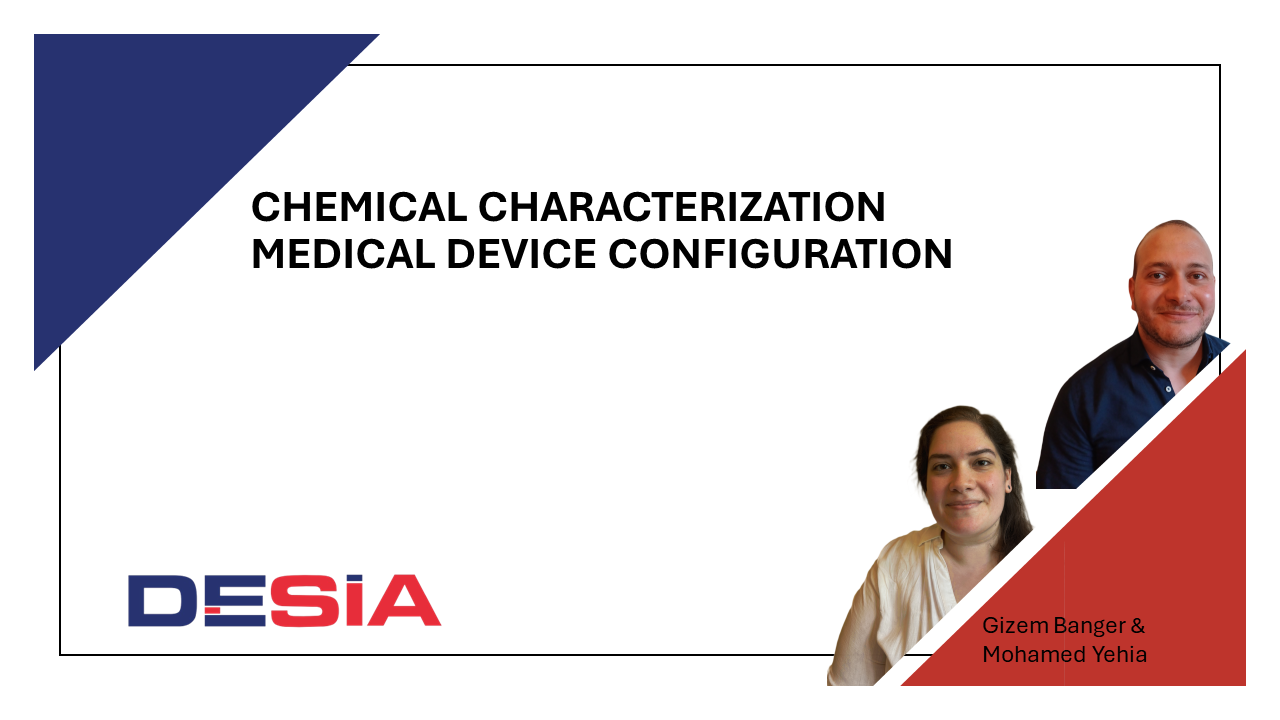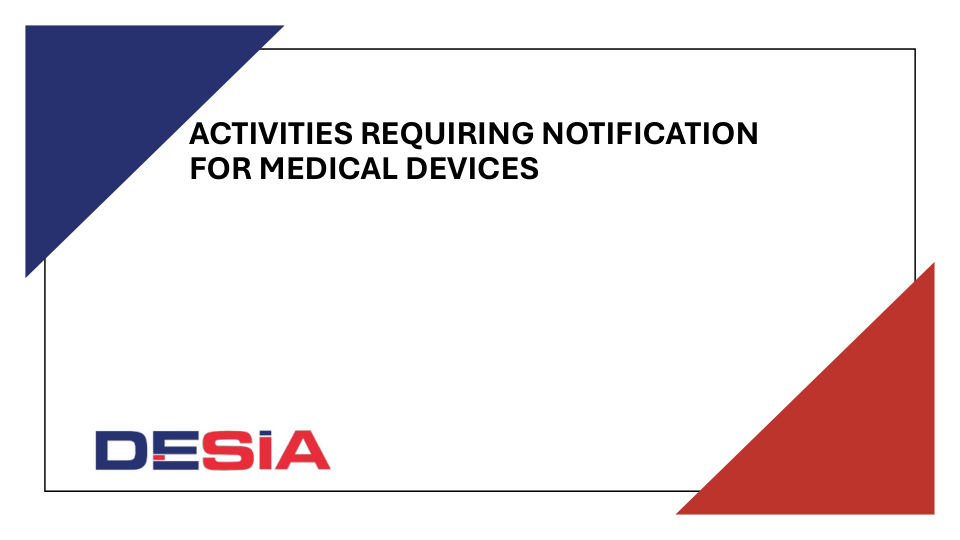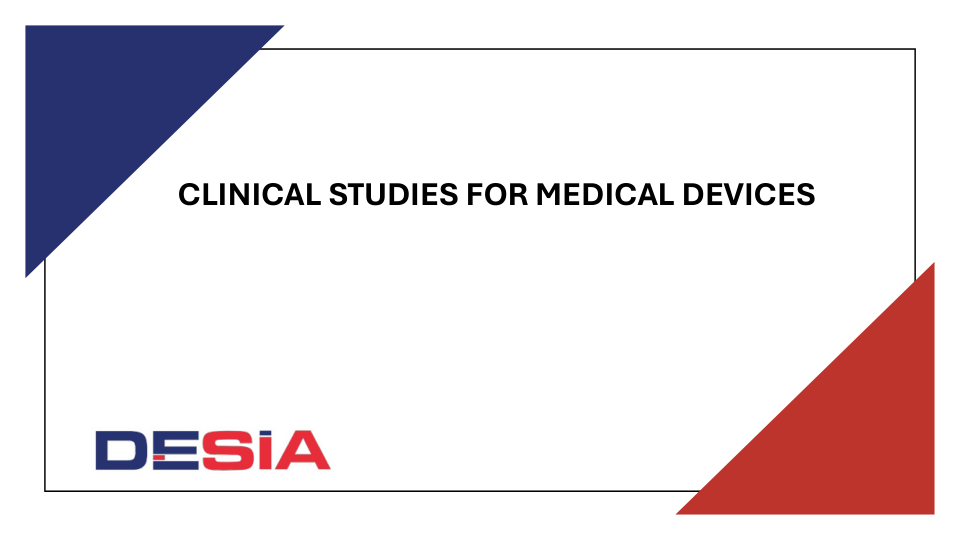2017/745 MEDICAL DEVICE REGULATION
ANNEX I GENERAL SAFETY AND PERFORMANCE REQUIREMENTS / CHAPTER II REQUIREMENTS REGARDING DESIGN AND MANUFACTURE
Is your device, parts or materials of the device included in one of the following groups?
- Devices that are invasive and have direct contact with the human body,
- Devices administering medicines, body fluids or other substances including gases to the body or extracting from the body, or
- Devices transporting or storing such medicines, body fluids or substances, including gases, in the body
If your answer is "YES", then we would like to take your attention to Article 10.4 of MDR General Safety and Performance Requirements (GSPR). Below are steps that need to be followed to prove that this clause has been met:
- The chemicals and formulations of your raw materials or semi-finished products need to be determined by contacting your suppliers. Within the scope of MDR, it is a requirement to define all the components in the device content with all the details. This information can be proven by the material composition analysis records, Material Safety Data Sheets (MSDS/SDS) and declarations obtained from the suppliers, including raw material/semi-finished products and packaging components. If you cannot access these t records from your suppliers or if you are unable to obtain the needed information from the records you have received, performing chemical characterization tests is an alternative option to consider.
- It is required to check whether these chemicals are included in the following legal lists;
(a) substances which are carcinogenic, mutagenic or toxic to reproduction (‘CMR’), of category 1A or 1B, in accordance with Part 3 of Annex VI to Regulation (EC) No 1272/2008 of the European Parliament and of the Council[1], or
(b) substances having endocrine-disrupting properties for which there is scientific evidence of probable serious effects to human health and which are identified either in accordance with the procedure set out in Article 59 of Regulation (EC) No 1907/2006 of the European Parliament and of the Council[2] or, once a delegated act has been adopted by the Commission pursuant to the first subparagraph of Article 5(3) of Regulation (EU) No 528/2012 of the European Parliament and the Council[3], in accordance with the criteria that are relevant to human health amongst the criteria established therein.
- If your product composition contains any of the substances listed in the legal lists presented in the second article of this newsletter, the case of containing the relevant substances in your product at a concentration above 0.1% weight by weight needs to be evaluated. In this evaluation, the medical device should be considered as a whole, and both raw and packaging materials should be considered. In cases where the substance concentration is greater than 0.1% by weight, the relevant composition should be supported by analysis records.
- If the medical device contains the specified substances above the acceptable concentration, it should be stated on the accompanying user manual/label when placing the product on the market, and the remaining risks should be evaluated by conducting a risk analysis within the scope of EN ISO 14971:2019+A11:2021 Medical devices – Application of risk management to medical devices standard. If the medical device contains the specified substances above 0.1% concentration, the actions to be taken are summarized below.
- analysis of the patient's or user's potential exposure to the substance;
- analysis of possible alternative substances, materials, or designs and the availability of such alternatives, if available, including information on independent research, peer-reviewed studies, and scientific opinions from relevant scientific committees;
- argumentation as to why possible substance and/ or material substitutes, if available, or design changes, if feasible, are inappropriate in relation to maintaining the functionality, performance and the benefit-risk ratios of the product; including taking into account whether its intended use includes the treatment of children or the treatment of pregnant or lactating women or other patient groups considered to be particularly vulnerable to such substances and/or materials;
- Benefit-risk assessment; the intended use of the device and the content, together with existing alternative materials, designs, or medical treatments, are taken into account for phthalate. Guidelines are updated as appropriate based on the latest scientific evidence, but not longer than five years.
- As medical device materials may have the potential to cause sensitization or an allergic reaction by the patient or user as a result of the presence of these substances, medical device manufacturers are required to complete the chemical investigation and take the necessary precautions regarding the instruction manual and/or label to eliminate a reasonable cause for concern.
[1] Regulation (EC) No 1272/2008 of the European Parliament and of the Council of 16 December 2008 on classification, labelling and packaging of substances and mixtures, amending and repealing Directives 67/548/EEC and 1999/45/EC, and amending Regulation (EC) No 1907/2006 ( OJ L 353, 31.12.2008, p. 1).
[2] Regulation (EC) No 1907/2006 of the European Parliament and of the Council of 18 December 2006 concerning the Registration, Evaluation, Authorisation and Restriction of Chemicals (REACH) (OJ L 396, 30.12.2006, p. 1).
[3] Regulation (EU) No 528/2012 of the European Parliament and the Council of 22 May 2012 concerning the making available on the market of and use of biocidal products (OJ L 167, 27.6.2012, p. 1).




